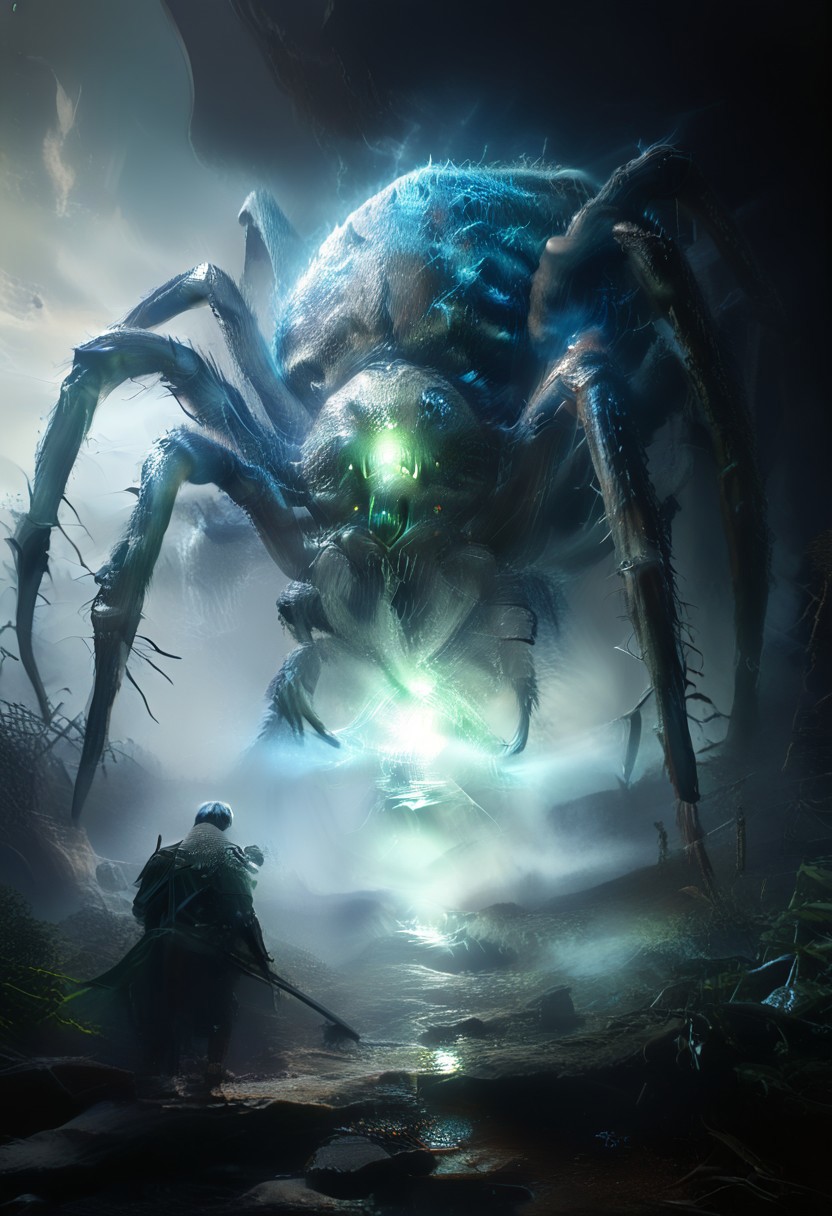masterpiece, ultra HD, extremely detailed, sharp focus, nightmare, midjourneyv6. 1, hyperkraximalism giant spider, bosstyle, Anterior Median Eyes: Typically the largest and most central eyes, often responsible for high- resolution vision. Anterior Lateral Eyes: Positioned slightly to the sides of the AME, providing a broader field of view. Posterior Median Eyes Usually smaller and used for light detection. Posterior Lateral Eyes: Situated farthest back, offering a wide- angle peripheral view. The lens of spider eyes is a curved, transparent structure designed to focus light. Some spider eyes, particularly the AMEs, have highly convex lenses for acute vision. The retinas are adapted to specific tasks. In jumping spiders, the AMEs have tiered retinas with different layers that detect various wavelengths of light, enhancing color vision. The PMEs are often more light- sensitive and better suited for detecting movement, even in dim conditions. Many spiders have a reflective layer behind the retina called a tapetum. It reflects light back through the retina, enhancing sensitivity in low light. This layer can create a glowing effect in the dark when light hits the eyes, especially noticeable in nocturnal hunters like wolf spiders. Spider eyes often appear shiny black but may reflect green, blue, or white light due to the tapetum or other structural adaptations. In some cases, the eyes are coated with fine hairs that help shield against debris or enhance sensitivity to light
bad quality, blurry, worst quality,
